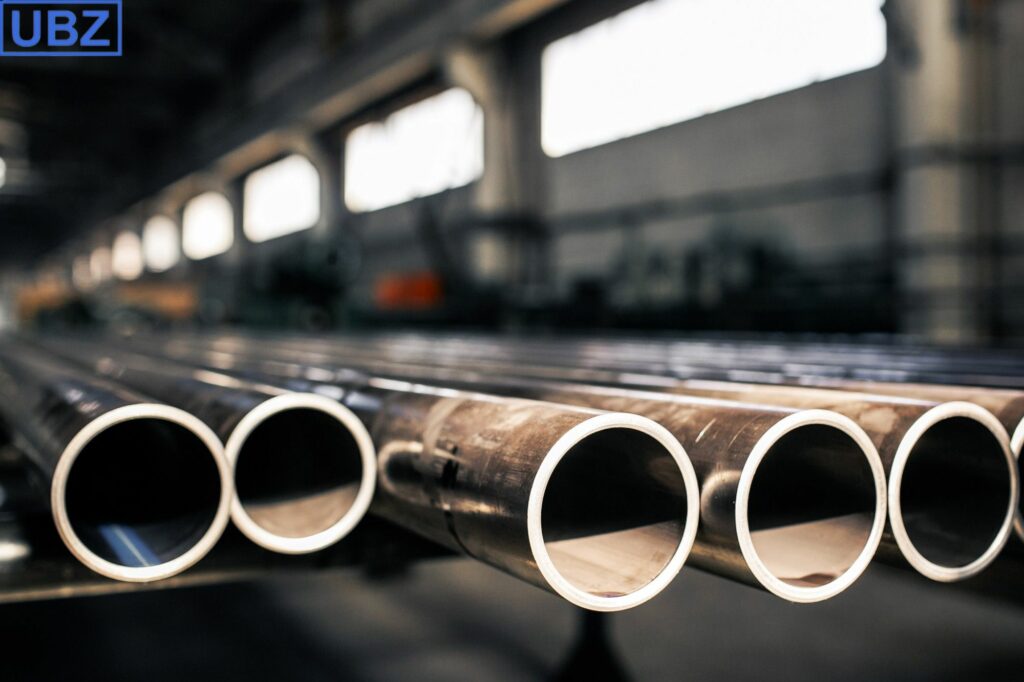With regards to plumbing systems, the decision of piping material is significant for guaranteeing ideal performance, durability, and longevity. Copper and stainless steel are two famous choices on the lookout, each with its arrangement of benefits and drawbacks. This article expects to give a nitty gritty examination of the properties, advantages, and downsides of copper pipe and stainless steel pipe, empowering readers to go with an educated choice for their plumbing needs.
Copper Pipe:
Copper piping has been utilized for a long time and is prestigious for its unwavering quality and flexibility. Here are a few central issues to consider:
a. Excellent Thermal Conductivity: Copper is an extraordinary transmitter of intensity, making it ideal for applications, for example, heated water supply. It considers quicker heat movement, bringing about faster boiling water conveyance and diminished energy utilization.
b. Corrosion Resistance: Copper is highly impervious to corrosion, guaranteeing longevity and durability. It can withstand cruel water conditions and isn’t vulnerable to rust, scale, or pitting, making it appropriate for both indoor and outdoor plumbing systems.
c. Flexibility and Ease of Installation: Copper pipe is generally adaptable, taking into account simple installation around corners and snags. They can be bound or brazed, giving secure joints that are impervious to spills.
d. Proven Track Record: Copper has a long history of effective use in plumbing systems, and its dependability has been laid out after some time. It has endured for an extremely long period in private, business, and industrial applications.
Stainless Steel Pipe:
Stainless steel pipes have acquired fame as of late because of their interesting properties and benefits. Here are the critical angles to consider:
a. Strength and Durability: Stainless steel is known for its uncommon strength, making it highly impervious to impact and outside powers. It can withstand high pressure and is less inclined to harm, making it reasonable for demanding applications.
b. Corrosion Resistance: Like copper, stainless steel displays excellent corrosion resistance. It can withstand forceful chemical environments, making it appropriate for industrial applications or regions with high degrees of causticity or alkalinity.
c. Hygiene and Style: Stainless steel is non-permeable, making it impervious to bacterial development and guaranteeing a perfect and sterile water supply. Furthermore, its smooth and modern appearance settles on it a famous decision in contemporary plan style.
d. Lower Thermal Conductivity: Stainless steel has a lower thermal conductivity contrasted with copper. While this may be worthwhile in specific applications where intensity move should be limited, it can bring about longer sit-tight times for high temp water conveyance.
Cost:
Copper pipes are for the most part more reasonable contrasted with stainless steel pipes. The cost of copper vacillates with economic situations, yet it will in general be somewhat cost-compelling. Then again, stainless steel pipes are in many cases more costly because of the higher cost of materials and assembling processes included.
Maintenance and Repair:
Copper pipes are moderately simple to keep up with and repair. Welding or brazing strategies can be utilized to join or repair copper pipes successfully. Conversely, stainless steel pipes require specific gear and strategies for welding, which might bring about higher maintenance and repair costs.
Noise Reduction:
Copper pipes have excellent noise reduction properties, limiting water stream noise inside the plumbing system. This is especially advantageous in private settings where calm activity is wanted. Stainless steel pipes, while still viable in lessening noise contrasted with a few different materials, may not offer a similar degree of noise reduction as copper.
Environmental Impact:
Copper is a characteristic and recyclable material, so pursuing it is an environmentally cordial decision. It tends to be reused or reused, diminishing waste and moderating assets. Stainless steel likewise has great recyclability, however, the assembling process of stainless steel pipes regularly requires more energy and assets contrasted with copper pipes.
Application Considerations:
While both copper and stainless steel are flexible materials, certain applications might lean toward one over the other. Copper pipes are generally utilized for potable water supply, heating systems, and gas lines. Stainless steel pipes are much of the time picked for industrial applications, like chemical processing, high-pressure systems, and environments where corrosion resistance is basic.
Code Compliance:
It is fundamental to consider nearby construction laws and guidelines while picking either copper or stainless steel pipes. A few jurisdictions might have explicit prerequisites or limitations on the utilization of specific materials, which could impact your choice.
Expansion and Contraction:
Copper pipes have a higher coefficient of thermal expansion contrasted with stainless steel. This implies that copper pipes might encounter more critical expansion and contraction with temperature changes. While this can be overseen through appropriate installation strategies and the utilization of expansion joints, it is a significant element to consider in systems where temperature varieties are normal.
Water Quality:
Copper pipes have been utilized for a long time in plumbing systems and are for the most part thought to be ok for conveying potable water. Copper has regular antimicrobial properties that can assist with inhibiting bacterial development inside the pipes. Stainless steel pipes are additionally viewed as safe for potable water supply, as they are non-reactive and filter no unsafe substances into the water.
Conclusion:
Taking everything into account, both copper pipe and stainless steel pipe have their arrangement of benefits and considerations. Copper is broadly perceived for its thermal conductivity, corrosion resistance, and ease of installation. Stainless steel offers strength, durability, corrosion resistance, hygiene, and tasteful allure. At last, the decision between the two relies upon elements, for example, explicit plumbing needs, financial plan, maintenance prerequisites, and environmental considerations.
Also Read: TRANSFORM YOUR LOOK WITH HAIR SCALP TREATMENT IN SINGAPORE
You may also like
-
The Silent Battle Beneath: Understanding the World of Wormfare
-
Unveiling the White CBG Strain: Characteristics, Potency, and Therapeutic Benefits
-
Why Choose Growers Choice Seeds for Buying Marijuana Seeds
-
What type of clothes wear in Qatar Business class?
-
Obtained Review – Get What Your Business Needs to Fuel Expansion

